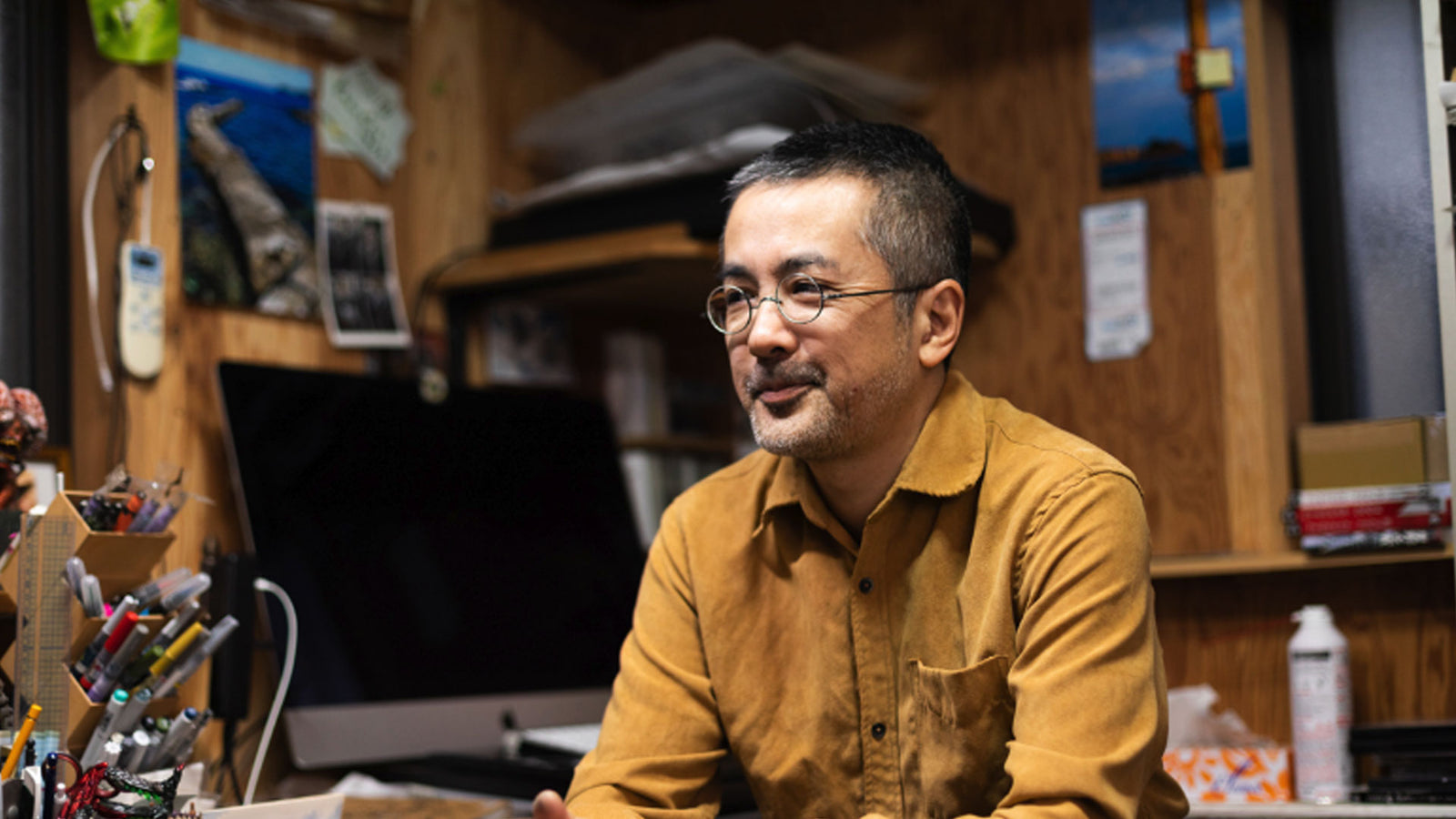Your Cart is Empty
Artists

TAKAYUKI TAKEYA: GODS OF RESIN
April 01, 2019 3 min read 0 Comments
When Japanese modelers come to mind, people usually think of very slick, almost sterile mechanical designs. But Takayuki Takeya is an artist and sculptor with an eye for past aesthetics and the organic. Whether he’s crafting machines, heroes, gods, or aliens, everything in Takeya’s world has a rough, lived-in quality, appearing ancient in ways that mere humans cannot comprehend. Takeya grew up in the wilds of Hokkaido, Japan’s northernmost region. His childhood spent hunting and skinning in the wilderness is evident in his work. His “The Hunters’ Angle” model series tells stories of fishermen, game hunters, and scavengers in worlds that are fantastically bizarre, but with a tangible, weathered look to them. In one of his sculptures, a snow garbed hunter holds up his captured game, an alien, so the artist incorporated actual fur, cloth, and leather into the hunter ’s clothes. “The Hunters’ Angle” is a world where tribal tattoos and Afro-Futurism collide with cryptozoology and Japanese religion.

Takeya’s vision has been lent to a plethora of video games, movies, and TV shows. A frequent collaborator with tokusatsu director Keita Amemiya, Takeya worked on the “Garo” series as a character designer, and as an effects and creature modeler on the film “Zeiram 2.” In 2012, Takeya collaborated with “Gamera” effects director Shinji Higuchi and “Neon Genesis Evangelion” director Hideaki Anno on the short film, “Giant God Warrior Appears in Tokyo.” Takeya reimagined the colossal bio-organic beast from Hayao Miyazaki’s “Nausicaä of the Valley of the Wind” (which Anno animated himself in the original film) and transports the creature to modern-day Tokyo. Takeya’s version of the beast trudges through the city with a lanky, sinewy body, reminiscent of HR Giger’s Xenomorph in its combination of mechanical and organic elements. The project got the attention of legendary Toho film studio, leading to all three men collaborating on 2016’s seminal “Shin Godzilla,” in which Takeya helped design Godzilla’s chilling final form at the end of the film.
Takeya’s creations possesses a regal beauty. He has rendered classical Japanese statues of Ashura and deities into plastic multiple times with painstaking attention to detail. A recurring motif for Takeya has been equipping characters from pop culture with ornate samurai armor. Takeya’s interpretation of the cyborg ninja Yoshimitsu for “Tekken Tag Tournament 2” particularly embodies his design philosophy. The muscle-like armor evokes the classical statues of Ungyo and Agyo at Tōdai-ji in Nara, while a metallic sheen places Takeya’s creation in the future.
Takeya also leant a hand in reimagining the heroes of Shotaro Ishinomori for Bandai’s “SIC” (Super Imaginative Chogokin) figures. Many of Ishinomori’s characters are tortured outcasts, and it’s clear that Takeya took such a notion to heart from the way he gave the character Kikkaider a mournful look as he contorts his asymmetrical body. His statue, “Metamorphosis Addict,” visualizes a twist on the “Kamen Rider” convention of an insect-themed hero. In Takeya’s hands, it becomes a man transformed into an Cronenberg-like creature by way of injection, as Takeya skillfully depicts a grotesque transition from flesh- and-blood on one body part to a green carapace on another.

“Metamorphosis Addict” by Takeya from Hobby Japan March, 1992. Grasshopper man who transforms repeatedly. “Bad guys made me a cyborg. Fortunately I could escape, but I became addicted to transformation because of the excessive amounts of drugs they used on me. A couple of injections would not be enough to complete my transformation.”
In 2013, the museum “3331 Arts Chiyoda” in Tokyo exhibited Takeya’s life’s work, featuring a new sculpture especially made for the exhibit: “Nikne-Kamuy.” The name comes from the Ainu (the northern island of Hokkaido’s indigenous people) word for “ogre” and is a fearsome bust of a creature with curvatures reminiscent of Jomon era pottery and Yayoi-era art (the Yayoi and the Jomon are Japan’s ancient tribes), and a rictus grin twisted like a knotted old pine tree. It’s a creature that embodies Takeya’s aesthetic philosophy: alien and bizarre, yet rooted in a weathered and timeless tradition of craftsmanship. Takeya’s work extends beyond being mere objects and become totems for fearsome gods and demons that exist on the edge of humanity’s imagination.
Subscribe
Sign up to get the latest on sales, new releases and more …
